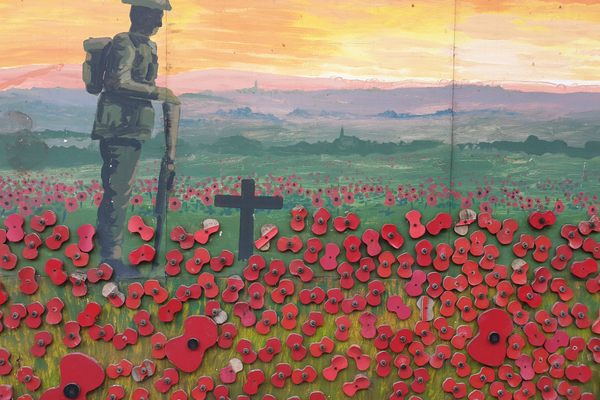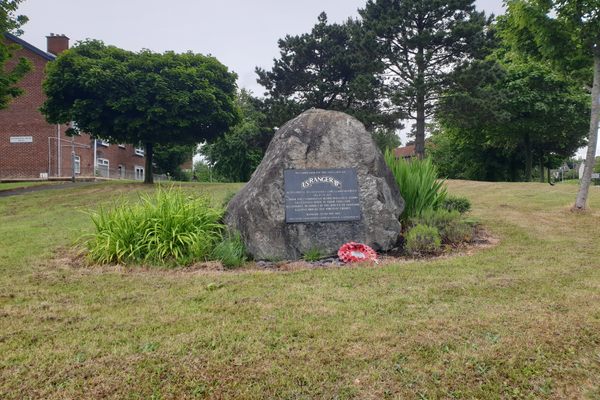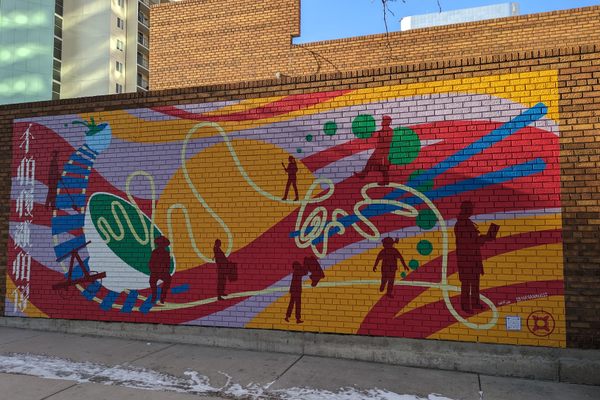AO Edited
Sir Arthur Chichester Mural
A mural commemorating a man who was instrumental in the development and expansion of Belfast.
The Chichester family has been connected with Ireland for over 400 years, but there was one member of the fabled family that stands out in Carrickfergus history. Arthur Chichester came to Ireland in 1597 after his brother Sir John Chichester, Governor of Carrickfergus was beheaded by the Native Irish clan leader Hugh O’Neill after the Battle of Carrickfergus. Arthur a professional soldier who had served against the Spanish Armada, as well as in many other foreign wars, was a captain under Sir Francis Drake in Carrickfergus and this is where he began his fight against the Native Irish to gain control of the Ulster Way against the rebelling Irish clans of the O’Neills and MacDonnells.
Arthur Chichester and his soldiers laid waste to the countryside around the town, scorching the earth and demising the Native Irish until their collapse of the Ulster Rebellion in 1603 as a result of the destruction of O’Neill’s Fortress in Dungannon and the poisoning of James Sorley MacDonnell a commander in the MacDonnell’s clan at Dunluce Castle. Afterward, he was appointed the Governor of Carrickfergus before being made the Baron Chichester of Belfast in 1612.
During his time in Ireland, he and his men built many of the stoned walls that surround the Carrickfergus town center today, including the walls around Shaftesbury Park and the North Gate. He also helped develop the local industry of the area including the port around Carrickfergus Castle, he also restored St Nicholas’s Church and founded and expanded the Belfast area which is now Northern Ireland’s Capital City. Sir Arthur Chichester saw Irish Catholicism as a major threat to the Crown and made it his personal mission to weaken the Irish Catholic roots in Ulster through persecution including the execution of two Bishops. This all helped sow the seeds in Ulster and why many see Sir Arthur Chichester as a major leading figure in the Plantation of Ulster with many Scottish and English settlers.
Despite being named the Baron of Belfast he remained solely devoted to Carrickfergus preferring it as his home instead of Belfast and made his residence at a large house he built between 1610 and 1618 called Joy Mount along the seaside in the town which now forms part of the Town Hall and Civic Centre. He died from pleurisy in 1625 and was buried at St Nicholas’s Church in the town. The role was handed to his brother Edward after his death. The Chichester family continued to be important figures for Carrickfergus and Belfast between the 17th Century and the mid 19th Century and the name Chichester is a common name of town and city streets.
Know Before You Go
The mural is located along Joymount in the gardens next to Joymount Church. The best way to get there is to travel to Carrickfergus Town centre via car, bus or train and the walk to the Library located on Joymount, the Mural is located in the gardens opposite on the old town wall of the town.


















Follow us on Twitter to get the latest on the world's hidden wonders.
Like us on Facebook to get the latest on the world's hidden wonders.
Follow us on Twitter Like us on Facebook